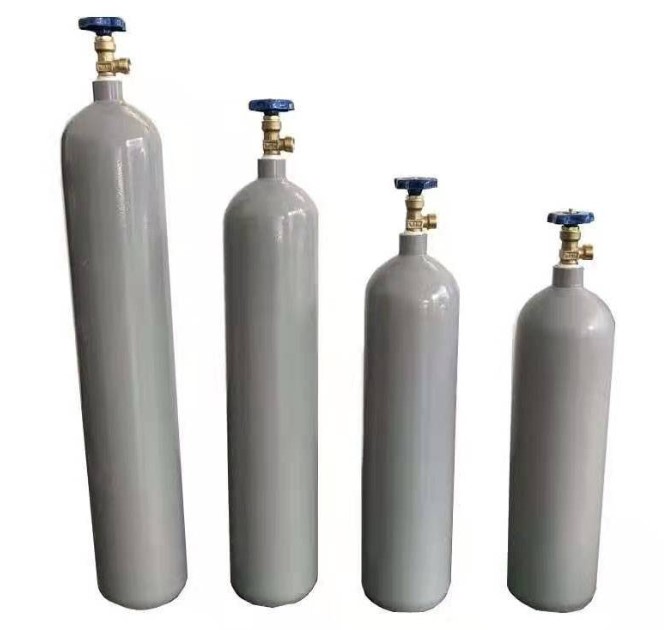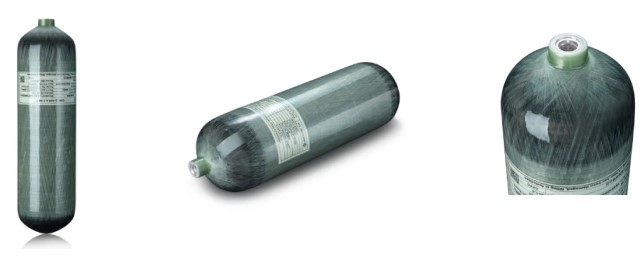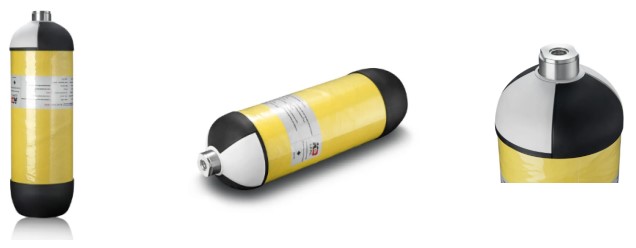The development of gas cylinders has been a fascinating journey, driven by advancements in materials science and engineering. From the early Type 1 traditional steel cylinders to the modern Type 4 PET liner, carbon fiber-wrapped cylinders, each iteration represents significant progress in terms of safety, performance, and versatility.
Type 1 Cylinders (Traditional Steel Cylinders)
Traditional Type 1 cylinders, the earliest incarnation of gas cylinders, were primarily constructed from high-strength steel. These cylinders, while robust and capable of withstanding high pressures, had inherent limitations. They were notably heavy, making them less suitable for portable applications. Their weight restricted their use primarily to industrial settings, such as welding and compressed gas storage. One of the key drawbacks of Type 1 cylinders was the risk of explosion and fragment scattering in the event of an accident or mechanical failure.
Type 2 Cylinders (Composite Cylinders)
Type 2 cylinders represented an intermediate step in the evolution of gas cylinders. These cylinders were constructed using a combination of materials, often a metal liner, and a composite overwrap, such as fiberglass or carbon fiber. The introduction of composite materials was a significant advancement, as it offered improved strength-to-weight ratios compared to traditional steel. While lighter and more portable than Type 1 cylinders, Type 2 cylinders still retained some of the safety concerns associated with steel cylinders.
Type 3 Cylinders (Aluminum Liner, Carbon Fiber Wrapped Cylinders)
Type 3 cylinders marked a substantial leap in gas cylinder technology. These cylinders featured an inner aluminum liner that was overwrapped with a robust carbon fiber composite. The incorporation of carbon fiber composite materials was a game-changer, as it dramatically reduced the overall weight of the cylinder, making them more than 50% lighter than Type 1 steel cylinders. This weight reduction significantly improved their portability, making them ideal for a broader range of applications. Improved designing mechanism, virtually eliminating the risk of explosion and fragment scattering. Type 3 cylinders found applications in diverse fields, including firefighting, rescue operations, mining, and medical equipment.
Type 4 Cylinders (PET Liner, Carbon Fiber Wrapped Cylinders)
Type 4 cylinders represent the latest and most advanced stage in gas cylinder evolution. These cylinders incorporate a high polymer liner instead of the traditional aluminum liner. High polymer material offers exceptional strength and corrosion resistance while being lighter than aluminum, further reducing the overall weight of the cylinder. The carbon fiber overwrap enhances structural integrity and durability. Type 4 cylinders offer unparalleled lightweight portability, making them ideal for a wide array of applications, including firefighting, SCUBA diving, aerospace, and automotive fuel storage. Its improved safety feature continues to be a defining characteristic of Type 4 cylinders, ensuring a new level of safety.
Features of Each Cylinder Type
Type 1 Cylinders:
-Constructed from high-strength steel.
-Durable but heavy and less portable.
-Used primarily in industrial settings.
-Associated with explosion and fragment scattering risks.
Type 2 Cylinders:
-Composite construction, combining a metal liner and a composite overwrap.
-Improved strength-to-weight ratio compared to steel.
-Moderate reduction in weight and improved portability.
-Retained some safety concerns of steel cylinders.
-Aluminum liner overwrapped with carbon fiber composite.
-Over 50% lighter than Type 1 cylinders.
-Suitable for a wide range of applications.
-Improved designing mechanism for enhanced safety.
-Plastic liner with carbon fiber wrapping.
-Exceptional strength, corrosion resistance, and reduced weight.
-Ideal for diverse applications, including aerospace and automotive.
-Maintains the improved safety feature.
In summary, the evolution of gas cylinders from Type 1 to Type 4 has been characterized by a relentless pursuit of safety, lightweight portability, and enhanced durability. These advancements have expanded the range of applications and offered solutions that redefine industry standards, providing greater safety and efficiency across various fields.
Post time: Nov-06-2023



